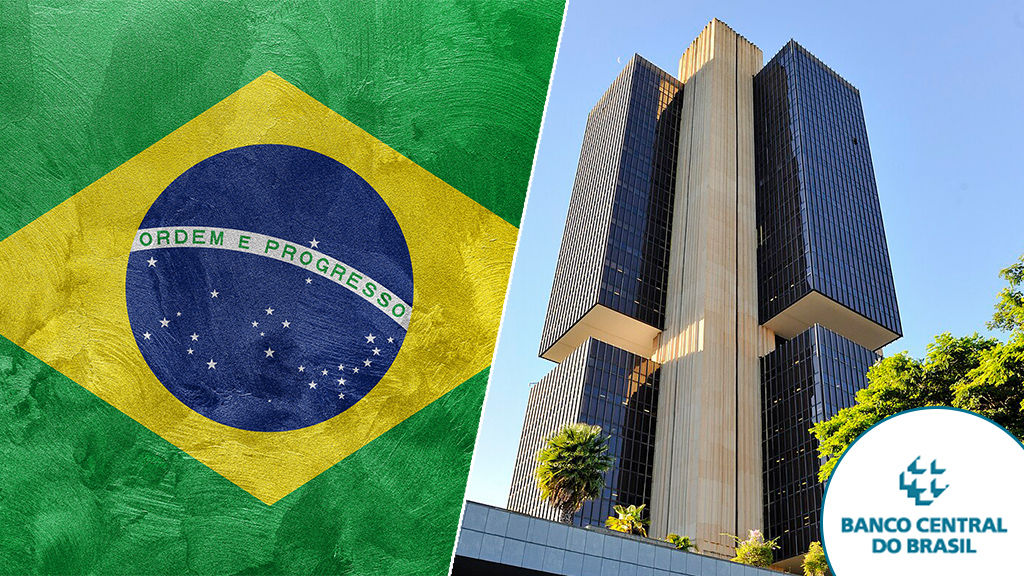- Summits
- EAST EUROPEBudapest02-04 September 2024

- EUROPEValletta11-14 November 2024

- EURASIADubai23-25 February 2025

- AFRICACape Town10-12 March 2025

- AMERICASSão Paulo07-10 April 2025

- ASIAManila01-04 June 2025

- News & Media
- SiGMA News
- Print & Digital
- SiGMA Media
- Directory
- Exhibiting Partners
- SiGMA’s Affiliate Club
- Selling your business?
- Foundation
- M & A Brokerage
- About Us
- Who we are
- How we help
- Let’s connect
In a remarkable turn of events, Brazil Central Bank is expected to ease interst rates. This move, set as a proactive measure against inflation,will position the region ahead of G7 nations in taking a decisive step to curb rising prices.
Banco Central do Brasil will commence this easing trajectory by reducing its benchmark interest rate by 50 basis points. This pivotal shift closely follows Chile’s historic measure in the region as it became the first major Latin American economy to reduce rates post-pandemic.
Latin American central banks have distinctively set themselves apart with their strategy through their unwavering discipline and drive to achieve autonomy. The monetary policy of Chile, Brazil, Mexico, Peru and Colombia will set the standards for other regions and the global community to follow the same strategy.
Brazil’s rate cuts are expected to continue
In a move that caught most economists off guard, the bank’s monetary policy committee, Copom, lowered its Selic policy rate to 13.25 percent. Out of the 46 economists surveyed by Reuters, only 10 had predicted such a substantial reduction, while the majority expected a more modest 25 basis point cut. This is the first rate cut Brazil has seen in three years. It follows a prolonged period of stable borrowing costs since September 2022, during which policymakers had aggressively raised rates by a remarkable 1,175 basis points to counter inflation – an unprecedented tightening of monetary policy globally at the time.
Despite a divided decision within Copom, the policy statement indicated a shared sentiment to continue the pace of rate cuts in the upcoming months. Committee members unanimously foresee further reductions of the same magnitude in subsequent meetings. This strategy is viewed as necessary for maintaining inflation control. The division within the board was evident, with five members voting for the 50-basis-point cut and four favoring a more conservative 25-basis-point reduction. This marked Copom’s first policy meeting involving two of President Luiz Inacio Lula da Silva’s nominees to the central bank’s board, who aligned with central bank chief Roberto Campos Neto in favor of the more aggressive rate cut.
Fitch upgrades ratings
Lula, who has criticized Roberto Campos Neto’s previous stance, praised the decision, saying that harmony has now been achieved between fiscal and monetary policy. The government’s recent efforts to introduce new fiscal rules and significant tax reforms have appeased investors and contributed to Fitch Ratings’ upgrade of Brazil’s sovereign rating.
Consumer inflation in Brazil has eased, reaching 3.19 percent in the 12 months ending mid-July, below the central bank’s annual target of 3.25 percent. Economic cooling and a stronger exchange rate played a role in this moderation. However, the central bank revised its 2023 inflation projection to 4.9 percent as less favorable base effects are expected to cause inflation to rise in the latter part of the year.
Copom clarified that the rate cuts align with its strategy to bring inflation down to the target over the relevant horizon for monetary policy, now extended to include 2024 and 2025 to some degree. Brazil’s inflation target remains 3 percent for both years, with policymakers anticipating consumer prices to rise by 3.4 percent in 2024 and 3.0 percent in 2025.
Selic interest rate is backed by government securities
Brazil’s robust monetary position gained momentum in March 2021 when the Selic rate (Special System for Settlement and Custody) escalated from an unprecendented low of 2 percent. This tactical maneuver successfully countered the inflationary ripple effects arising from substantial public spending and rate reductions that were orchestrated in response to the Covid-19 pandemic. In fact Brazil’s assertive approach preceded that of the US Federal Reserve, which embarked on its rate hikes only a year later, in March 2022. The European Central Bank’s policy tightening came even later, making evident the proactive advantages derived from Brazil’s early rate rise.
The Selic interest rate serves as the primary tool for the implementation of Brazil’s monetary policy by the Banco Central do Brasil (BCB). This rate, also known as the ‘over Selic’, represents the average interest rate of overnight interbank transactions backed by government securities within the Selic system. The BCB’s Monetary Policy Committee (Copom) establishes the Selic rate target as part of the inflation-targeting regime. Copom’s goal is to maintain the IPCA inflation rate around the target while anchoring inflation expectations. To achieve this, the BCB conducts daily open market operations to align the effective Selic rate with Copom’s set target.
Brazil’s approach preceded the US Federal Reserve
Brazil’s robust monetary position gained momentum in March 2021 when the Selic rate (Special System for Settlement and Custody) escalated from an unprecendented low of 2 percent. This tactical maneuver successfully countered the inflationary ripple effects arising from substantial public spending and rate reductions that were orchestrated in response to the Covid-19 pandemic. In fact Brazil’s assertive approach preceded that of the US Federal Reserve, which embarked on its rate hikes only a year later, in March 2022. The European Central Bank’s policy tightening came even later, making evident the proactive advantages derived from Brazil’s early rate rise.
The favorable outcomes of Brazil’s forward-thinking rate strategy are now unmistakably evident. Consumer price growth in the largest Latin American economy moderated to a modest 3.2 percent over the 12 months ending in June. This deceleration comfortably positioned the economy below this year’s official inflation target. In Chile, annual headline inflation currently rests at 7.6 percent, an impressive contrast to the 14.1 percent recorded in August of the preceding year. Latin America’s success in grappling with inflation has been attributed to the absence of the credibility that the Fed held. The region lacked the luxury to dismiss inflation as a transient occurrence that would naturally subside. The Fed’s delayed response is likely to set it back by a year.
Brazil’s monetary strategy has not stifled growth
While Brazil’s tight monetary policy may have seemingly constrained economic expansion, it has evidently not stifled growth. Economists are amending their forecasts in response to an unexpectedly robust first quarter, particularly propelled by the agricultural sector. Citi, for instance, projects a 2.3 percent expansion of the gross domestic product for the current year.central bank’s preemptive understanding that strong demand constituted a pivotal component of inflation. Some economists are voicing concerns over Brazil’s promptness in this regard, cautioning against hastiness, citing lingering high service inflation, unanchored inflation expectations and a labour market that continues to be problematic. In the face of considerable fiscal expansion, economists argue that delaying the initiation of the rate-cutting cycle could be a more prudent approach.
Latin American economies
Mexico, the second-largest economy in Latin America, navigates a distinct challenge. Its close correlation with the flourishing US economy has perpetuated elevated headline inflation, which stood at 5.1 percent in the year. Inflation in Mexico remains notably persistent, particularly in the services sector.
Informed by a Citi-conducted poll, economists anticipate Banco de México to defer rate cuts until December, which, when initiated, are expected to be conservative, possibly amounting to a mere quarter point reduction.
Among the prominent Latin American economies, Argentina stands apart due to its exceptional circumstances. The Peronist government’s inclination toward printing money for public spending, coupled with distorted official exchange rates, has fanned the flames of inflation, catapulting it to a staggering annual rate of over 115 percent. Interest rates, in effect, stand at a staggering 155 percent per annum.
As the region collectively navigates economic challenges, it becomes increasingly evident that while victory over inflation is a shared aspiration, the path to achieving it is paved with complexities and intricate decision-making.
Recommended for you

















